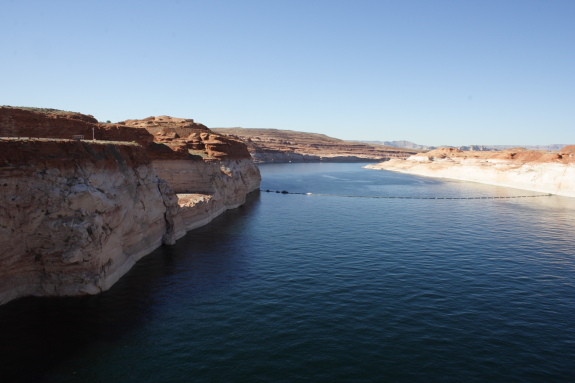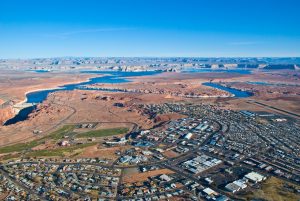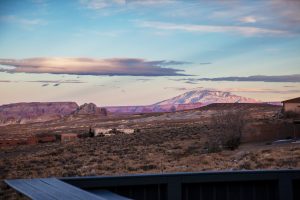Lake Powell final water elevation predictions have been released by the Bureau of Reclamation this week. The lake should expect at least a 50 foot increase in elevation bringing it to just about 60 feet below full pool.
Lake Powell and Lake Mead work together to provide a stable water supply to the states of California, Arizona and Nevada. The drought that has been ongoing for the past eight years has caused our water storage to shrink. Currently Lake Powell is at 45% of water capacity while Lake Mead is at 50%.
Lake Powell has done it’s job these last eight years in providing water downstream even when infow to the lake was significantly less that what was going out. According to Colorado Compact signed in 1922 by the seven states of the Colorado River Basin, Lake Powell needs to release 8.23 million acre feet of water a year. In April of 2003 that caused Lake Powell to be at only 33% of it’s overall storage capacity.
Cities around the lower basin states, while noticing some drought conditions, have not been adversely affected to the point of people having to relocate. As a nation we have built large cities in pretty hostile environments, ie, Phoenix and Las Vegas. Real Estate in many places in the West would be uninhabitable without the water provided by the Colorado River.
Lake Powell is managed by the National Park Service and it comprises 13% of the Glen Canyon National Recreation area. There is no private land ownership on the shores of Lake Powell. Towns like Greenehaven and Page in Arizona and Big Water, Utah have property that offers views of Lake Powell. The area around the new Amangiri Resort and Spa at Lake Powell will also offer some lake views.
As the elevation of the water level at Lake Powell increases so does the surface area. The effect on real estate in the area is the lake can be seen from more properties and homes. Will the higher lake levels prop up home prices? We’ll have to wait and see on that one.
The storage systems for water that have been put in place like Lake Powell, Lake Mead and Parker Dam etc… have done well in storing and distributing water. While this year is above average it is no way signaling the end of the drought.
For more information see Colorado River Spring Runoff Part 1
 This shot of Lake Powell taken while standing on top of Glen Canyon dam shows the white bathtub ring. The ring is a calcium carbonate deposit left on the canyon walls by the hard water of the Colorado River. The high water mark is the top of the line. The lake is about 110 feet below that in this photo. By July 2008 the water will be 50 feet higher on the canyon wall.
This shot of Lake Powell taken while standing on top of Glen Canyon dam shows the white bathtub ring. The ring is a calcium carbonate deposit left on the canyon walls by the hard water of the Colorado River. The high water mark is the top of the line. The lake is about 110 feet below that in this photo. By July 2008 the water will be 50 feet higher on the canyon wall.
To track spring runoff, Lake Powell Elevation and historical elevations here is a wonderful website Lake Powell Water Data







This year might be the year that I finally head down to recreate at Lake Powell – I’m ashamed to admit that I’ve never been there. It looks beautiful, but is it warm?
Warm? Not yet, but it will be. Water temperature on the surface of the Lake hits 80 degrees by the end of July first of August.
Currently it is 57 at the surface, but it does not take long to warm up once the weather gets hot.
As far as air temp, we are usually about 10 below St. George, not always a hard, fast rule, but usually.
The lake just started coming up – about 4 inches a day right now. My guess is by the end of May we may see upwards of 18 inches of vertical increase a day. Amazing amounts of water.
Drop me a line if you want some good ideas on where to recreate.